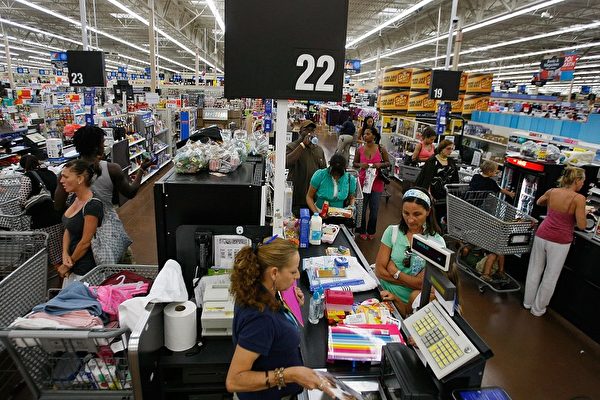The US economy’s growth in the first quarter slowed more than expected, but accelerating inflation and rising prices indicate that the Federal Reserve is unlikely to cut interest rates before September.
On Thursday (April 25), the US Department of Commerce released a report stating that economic growth in the first quarter was weaker than initial expectations, with prices rising at a faster pace.
Data from the Bureau of Economic Analysis within the Department of Commerce showed that the gross domestic product (GDP), a broad measure of goods and services produced during January to March after adjusting for seasonal and inflationary factors, had an annual growth rate of 1.6%. This is the slowest growth rate since the economy contracted in the second quarter of 2022.
Economists surveyed by Dow Jones had previously forecasted that economic growth would reach 2.4%, compared to 3.4% in the fourth quarter of 2023 and 4.9% in the previous quarter.
Consumer spending during this period increased by 2.5%, lower than the 3.3% growth in the fourth quarter of last year. Fixed investment at the state and local levels, as well as government spending, helped keep the GDP positive this quarter, while a decline in private inventory investment and an increase in imports had a negative impact.
The International Monetary Fund increased its forecast for US economic growth in 2024 from 2.1% in January to 2.7% last week, citing stronger-than-expected employment and consumer spending. The average monthly job additions in the first quarter were 276,000, compared to an average of 212,000 in the final quarter of 2023.
According to the US Department of Commerce, American consumers are still spending heavily on healthcare, insurance, and other services. However, the slowdown in spending on goods like cars and gasoline, along with reduced corporate inventory investment, dragged down overall growth.
The Personal Consumption Expenditures Price Index, a key inflation metric for the Federal Reserve, rose by 3.4% this quarter, marking the largest increase in a year. Excluding food and energy, the core personal consumption expenditures price index rose by 3.7%, significantly above the Fed’s 2% target. Central bank officials tend to focus on core inflation as a better indicator of long-term trends.
The GDP price index, also known as the chained price index, grew at a rate of 3.1%, slightly higher than the 3% estimated by Dow Jones.
Following the release of these economic data, Dow Jones Industrial Average futures fell by over 400 points. US Treasury bond yields rose, with the benchmark 10-year yield recently at 4.69%.
Market participants are anxious about the monetary policy situation and when the Fed will begin lowering the benchmark interest rate. Despite no rate hikes by the Fed since July 2023, the federal funds rate, which sets the charge for overnight lending between banks, stands at a target range of 5.25% to 5.5%, the highest level in about 23 years.
Due to persistently high inflation, investors are adjusting their views on when the Fed might start cutting rates. The current market prediction is for rate cuts to begin in September, with the Fed likely to lower rates only once or twice this year. Traders now indicate that the Fed will cut rates only once in 2024, following the GDP report release.
Since inflation began surging, it has eroded wage growth, but overall consumers have managed to keep pace with inflation. The personal savings rate decreased from 4% in the fourth quarter of last year to 3.6% in the first quarter of this year. Adjusted for taxes and inflation, income grew by 1.1% during the same period, lower than 2%.
The spending pattern in this quarter has also shifted. Goods spending declined by 0.4%, largely due to a 1.2% drop in the purchase of big-ticket durable goods. Service spending increased by 4%, reaching the highest quarterly level since the third quarter of 2021.
Residential investment surged by 13.9%, the largest increase since the fourth quarter of 2020, potentially signaling a positive trend in the real estate market.
Economists and Fed policymakers generally expect interest rates to remain at their highest levels in two decades this year, but an economic recession is unlikely to occur.
Oren Klachkin, an economist at Nationwide Financial Markets, told CNN: “With high-interest rates and persistent inflation, consumers are becoming more selective about what and how much they buy.” “But as long as the job market stays stable, they will continue to spend. This should be enough to offset the pressure from inflation and ongoing high rates.”

